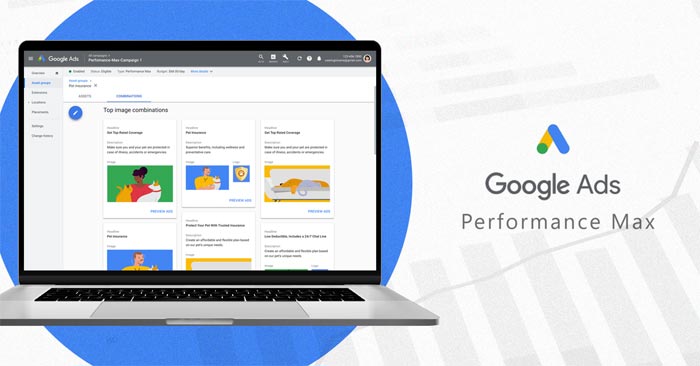Make 2023 Digital Marketing Trends Work For You

The What and The Why
People in this age value speed, variety, affordability, and above all, convenience. In order to survive, businesses have recognized the necessity for a shift into digital spaces, such as Facebook, Instagram, Twitter, and websites. Practically any industry you can think of has made that change to keep up with the 2023 trends in digital marketing: media, films, music, food service, retail, and many others.
In fact, data shows that 73% of customers expect brands and businesses to understand their unique needs and expectations. This heightened expectation has driven a significant number of consumers to actively search online for products and services that cater to their needs efficiently.
And this is what digitalization offers any industry – the capability for businesses to deliver what consumers value the most – whether it be through accessibility, shipping, and availability, a wide selection of products and services, cheaper alternatives, or overall convenience.
That being said, any business owner in the digital age knows that going online doesn’t just stop at creating a Facebook page or building a website – there should be a constant effort to reach your target customers.
Digital marketing, as abstract as it sounds, can be described as such: it is a skill that requires time and effort to develop and make effective, but it can be learned over time. For companies or business owners that do not have enough time or resources to master it, there are digital marketing experts and agencies that can deliver professional digital marketing services.
More than just reaching out to users via digital platforms, digital marketing is a combination of constant content creation and correct timing. As such, the need for a strong digital strategy has never become more crucial. To ensure success, it’s also imperative to know the trends in digital marketing as well as the digital marketing metrics to track to measure the effectiveness of your efforts.
The Current State of Digital Marketing in 2023
Integrating Artificial Intelligence in Business Operations and Adapting to Economic Shifts
In 2023, there has been a significant leap in generative AI technology. This has revolutionized digital marketing by enabling businesses to create highly personalized and engaging content at scale. From chatbots to content generation, AI-driven tools like ChatGPT have become integral to marketing strategies.
Alongside technological advancements, there are concerns about an impending economic slump. In August 2023, the Philippines witnessed an unforeseen increase in the annual inflation rate, which surged to 5.3 percent, marking a notable uptick from the previous month’s 16-month low of 4.7 percent. This unexpected rise surpassed market predictions of 4.7%, and notably, it was driven by a substantial increase in food prices, which soared to an 8.1% inflation rate, the highest in five months, compared to the 6.3% recorded in July.
This, among other factors, has forced businesses to be more strategic and conservative in their marketing budgets and approaches. Digital marketing strategies across businesses are being adjusted to maximize ROI and adapt to changing economic conditions.
The Impact of Social Media Growth and Strategic Marketing Strategies

High-profile online conflicts among industry giants, such as the public disputes between Mark Zuckerberg and Elon Musk, have brought to light the influential role of social media platforms in shaping public discourse and the need for digital marketing to adapt to these dynamics.
Furthermore, the explosive growth of social media has reached new heights, with 4.88 billion active users globally as of July 2023, which equates to 60.6 percent of the world’s population. This signifies an unprecedented opportunity for digital marketing to reach and engage with an extensive global audience, making it an essential channel for businesses to establish their presence and connect with potential customers on a massive scale.
Additionally, the Reuters Institute for the Study of Journalism (RISJ) highlighted that organizations no longer need to contend solely with digital transformation, but they must continually evolve in response to changing digital landscapes. This necessitates a flexible approach to digital marketing that can swiftly adapt to emerging trends and technologies.
In this article, let’s explore ten current digital marketing trends that are set to make a significant impact in empowering businesses to connect with their target audience.
Following the Latest Digital Marketing Trends of 2023
There are numerous trends that have surfaced in the realm of digital marketing. But there are a few you should take note of especially. Why should you bother? Following trends allows you to tap into specialized markets and niche audiences, as well as keep you abreast of the latest developments in digital marketing.
Check out some of the 2023 Digital Marketing Trends here:
1. Data privacy
According to CISCO Data Privacy Benchmark Study 2023, 95% of respondents recognize privacy as a business necessity, up from 90% last year, and 94% believe their customers won’t buy from them if data isn’t properly protected, an increase from 90% in the previous year.
Regulations like the General Data Protection Regulation (GDPR) emphasize the need to protect consumer data. For marketers, this means adhering to strict standards to ensure the security and privacy of customer information. Transparency in data practices and responsible data management have become non-negotiable.
2. SEO: The Shift to Google Analytics 4
Google Analytics 4 (GA4) has taken center stage in 2023, as Google sunsets its Universal Analytics offering. For marketers, this shift requires embracing GA4 and its enhanced capabilities. To navigate this transition successfully and understand how to find out if your brand is authoritative, marketers can explore available courses online or seek advice from an SEO company or SEO experts.
Additionally, optimizing websites for mobile-friendliness and enhancing site speed and user experience are key aspects that need attention in this SEO-driven era.
3. Email Marketing
Despite the emergence of new marketing channels and technologies, email marketing remains one of the digital marketing trends in 2023, and rightly so. Businesses use email campaigns to capture the interest of potential customers and encourage them to provide their contact information or take other actions that can lead to future sales.
In 2022, it was projected that there would be approximately 4.3 billion email users globally, according to Statista’s 2021 data. This number is expected to increase to 4.6 billion by 2025, constituting over 50% of the anticipated global population.
With almost everyone using email nowadays, it also offers businesses a highly accessible way to connect with customers.
4. Video Dominance
As video continues to dominate the marketing landscape, marketers should consider incorporating video strategies, including the use of short-form videos, such as reels, as well as live streaming, to stay competitive and effectively connect with their target audience.
According to eMarketer, all video advertising is set to grow by 4.7% in 2024. Notably, 81% of businesses are already utilizing video as a marketing tool.
Live streaming content is emerging as a significant sub-trend within video marketing, with 23% of global viewing time dedicated to live content. This indicates that real-time engagement through live streaming can be a valuable avenue for marketers to explore.
Moreover, businesses that effectively engage their audience with video content online are reported to be over 90% more likely to secure future purchases, underscoring the substantial impact video marketing can have on conversion rates and long-term customer loyalty.
5. Word-of-Mouth Marketing And Influencer Marketing
This is an oldie but goodie. A good sign that your business is on the right path is when your product or services are consumed, and more importantly, shared with other consumers. Just see the meteoric rise of TikTok, the continuous stream of live selling on marketplaces, and the movers that drive leads for local and multinational brands. This is how influencers – from the big celebrities to nano influencers – do their job.
Projections indicate that the influencer marketing industry will grow by 29%, reaching $21.1 billion in 2023. As companies continue to allocate larger portions of their marketing budgets towards influencer collaborations, it reflects a growing recognition that influencers have the power to authentically connect with target audiences.
Influencers have become more than just social media personalities; they are seen as relatable and trustworthy figures whose opinions influence purchasing decisions. Their endorsement of products or services can sway consumer opinions, drive engagement, and ultimately boost sales.
6. Social Commerce
The rise of social commerce signifies a significant shift in the way brands can engage with and sell to their audience. Social media platforms have evolved beyond being just communication tools and have become robust e-commerce platforms in their own right.
eMarketer predicts that social media commerce sales will reach $36.62 billion in 2023, reflecting the growing importance of social commerce in the digital marketing landscape.
This trend means that marketers need to adapt their strategies to leverage the potential of social commerce. They can no longer view social media solely as a means of brand promotion or customer engagement; it’s also a direct sales channel.
Marketers should focus on creating compelling and seamless shopping experiences within social media platforms, optimizing product listings, and utilizing advertising and influencer partnerships to drive sales.
7. Podcasts
With 424.2 million listeners worldwide, podcasts have become a valuable opportunity for brands. Edison Research shows that 56% consider purchasing after listening to a brand’s podcast ad. This channel continues to gain traction for brands aiming to raise awareness and reach new audiences.
Podcasts offer an effective means of engagement, as sponsorships or mentions can come across as trusted recommendations. This platform also provides a unique avenue for brand exposure, storytelling, and audience expansion, particularly among niche demographics.
8. Chatbots will find prominence in more websites
Chatbots are on the rise, with many websites incorporating them to improve user experience and streamline customer interactions. In fact, 62% of customers prefer using a customer service bot over waiting for a human agent to respond to their inquiries.
Unlike human customer service agents, chatbots can operate 24/7, providing round-the-clock support to users. It can be cost-effective for businesses, as it reduces the need for a large customer support team to handle routine inquiries. This allows companies to allocate resources more efficiently and potentially reduce operational costs.
Chatbots can also collect valuable data about user interactions, preferences, and pain points. Marketers can leverage this data to gain insights into customer behavior, which can inform marketing strategies, product development, and personalized customer experiences.
9. AI and machine learning

The prominence of artificial intelligence (AI) and machine learning in 2023 signifies a transformative era in marketing and customer engagement. MarketsandMarkets projected growth of the global AI in the marketing market to $40.3 billion by 2025, which underscores the increasing relevance of these technologies.
AI models like ChatGPT and DALL·E empower marketers to analyze data efficiently, personalize content, and create immersive experiences within the Metaverse. This allows for more targeted campaigns, dynamic customer interactions, and the ability to stay at the forefront of emerging digital trends.
10. Case Studies
Case studies have emerged as a prominent content marketing trend. These real-world examples showcase a brand’s success and resonate with consumers, making them an invaluable asset in marketing campaigns.
Neil Patel cites how client case studies rank as the top self-promotional content marketing strategy employed by marketing agency executives in the United States. In addition to that, a significant 62.6% of those surveyed by eMarketer report their effectiveness in lead generation.
Marketers should consider integrating case studies into their content marketing strategies, particularly when targeting audiences seeking in-depth information and proof of a brand’s capabilities. When potential customers see concrete evidence of how a product or service has benefited others, it instills trust and confidence in the brand.
Strategies for Successful Digital Marketing in 2023
With the sheer volume of digital content that audiences are bombarded with, simply using social media platforms and a website won’t get your brand soaring to the heights you aspire to reach.
To remain competitive, companies need to adopt innovative strategies that resonate with today’s tech-savvy consumers. Here, we delve into five key strategies that are shaping successful digital marketing in 2023 and provide real-world examples to illustrate their effectiveness:
1. Integrate an Omni-Channel Approach
In 2023, a siloed approach to marketing is no longer viable. An omnichannel approach in marketing and customer service refers to the practice of providing a seamless and integrated experience to customers across all available channels and touchpoints. This approach acknowledges that consumers today interact with businesses through a variety of mediums, including physical stores, websites, mobile apps, social media, email, and more.
A prime example of this strategy’s success is Starbucks. They’ve seamlessly integrated their mobile app with in-store experiences, allowing customers to order ahead, earn rewards, and pay using the app. This omni-channel approach has led to increased customer loyalty and engagement.
2. make the most out of AI Technology
Artificial Intelligence (AI) is revolutionizing digital marketing by enabling personalized, data-driven strategies. Amazon, the e-commerce giant, exemplifies this. Its recommendation engine uses AI to analyze customer behavior and suggest products, resulting in a substantial boost in sales.
Leveraging AI for customer segmentation, chatbots, and predictive analytics can streamline operations and enhance customer experiences.
3. Personalization at Scale
Gone are the days of generic marketing messages. Personalization at scale is important, and Spotify sets a stellar example. With their “Spotify Wrapped” campaign, they deliver personalized year-in-review playlists to users, showcasing their most-listened-to songs and artists. This personal touch fosters a deeper connection with users and encourages them to stay engaged with the platform.
Establish a system or process that helps you to know whether your digital strategy is working or can be improved upon. Certain questions that need to be answered include:
- Did our audiences respond more to this content or the other?
- How long did audiences stay on our site, and did they engage with us?
- For a particular content, how many clicks, shares, or reactions did it garner?
4. content quality over quantity
Content is king and quality reigns supreme. HubSpot, a leading inbound marketing platform, exemplifies this strategy. They consistently produce high-quality, informative content, ranging from blog posts to eBooks, which helps establish them as an authority in their field.
Regular content audits and performance tracking ensure that their content consistently meets their audience’s expectations. Fortunately, there are numerous tools available that are specifically designed for tracking search engine rank page (SERP) volatility, which monitors the changes in the position that a website ranks in Google’s result pages. This, too, informs how well the content you produce is performing.
5. Diversification of social media channels
It’s not enough to rely solely on a single social media platform. Embracing a diversified approach across various social media channels can be a game-changer for your digital marketing efforts. Businesses should devote time to crafting a cohesive and sound digital strategy that can be executed. Remember, results aren’t always instant. And your digital strategy should tap the channels and platforms that your target audience already uses.
The best example of this strategy can be found in Nike’s social media presence. Nike doesn’t limit itself to just one platform; instead, it strategically engages with its audience on Facebook, Instagram, Twitter, and YouTube. This multifaceted approach allows them to reach a broader demographic, showcase their diverse range of products, and maintain a dynamic brand presence that resonates with consumers across different platforms.
Recognizing Trends help your business move forward
Social media and interactive marketing personality Ian Schafer said: “Innovation needs to be a part of your culture. Consumers are transforming faster than we are, and if we don’t catch up, we’re in trouble.”
Audiences have become accustomed to receiving fresh content at an unprecedented pace, thus demanding brands to produce fast and well-made content.
This becomes the challenge for digital marketers as they have to continually study the approaches they’ve taken in the past, identify mistakes, seek new opportunities, stay on trend, and constantly recalibrate their approaches to ensure a strong and continued connection with their target market. Strategies that have worked in the past will likely not work forever, while strategies that seem unlikely to take off, may just surprise you.
The entire world is in a constant state of evolution and the same can be said for digital marketing. As such, only through persistent and constant learning – most times through trial and error – can brands and businesses remain relevant, and ultimately, thrive.
Contact us to stay ahead of the curve in digital marketing.










